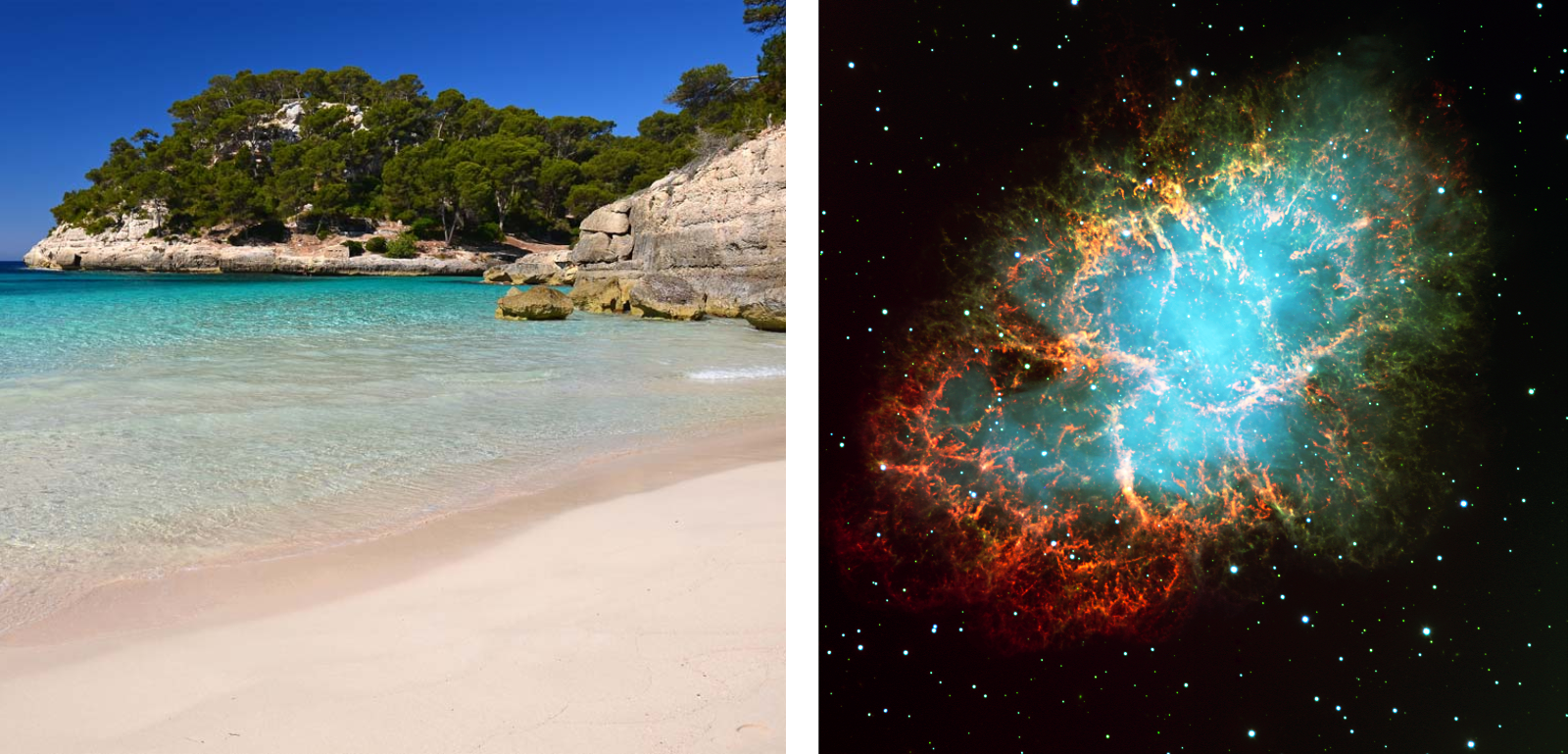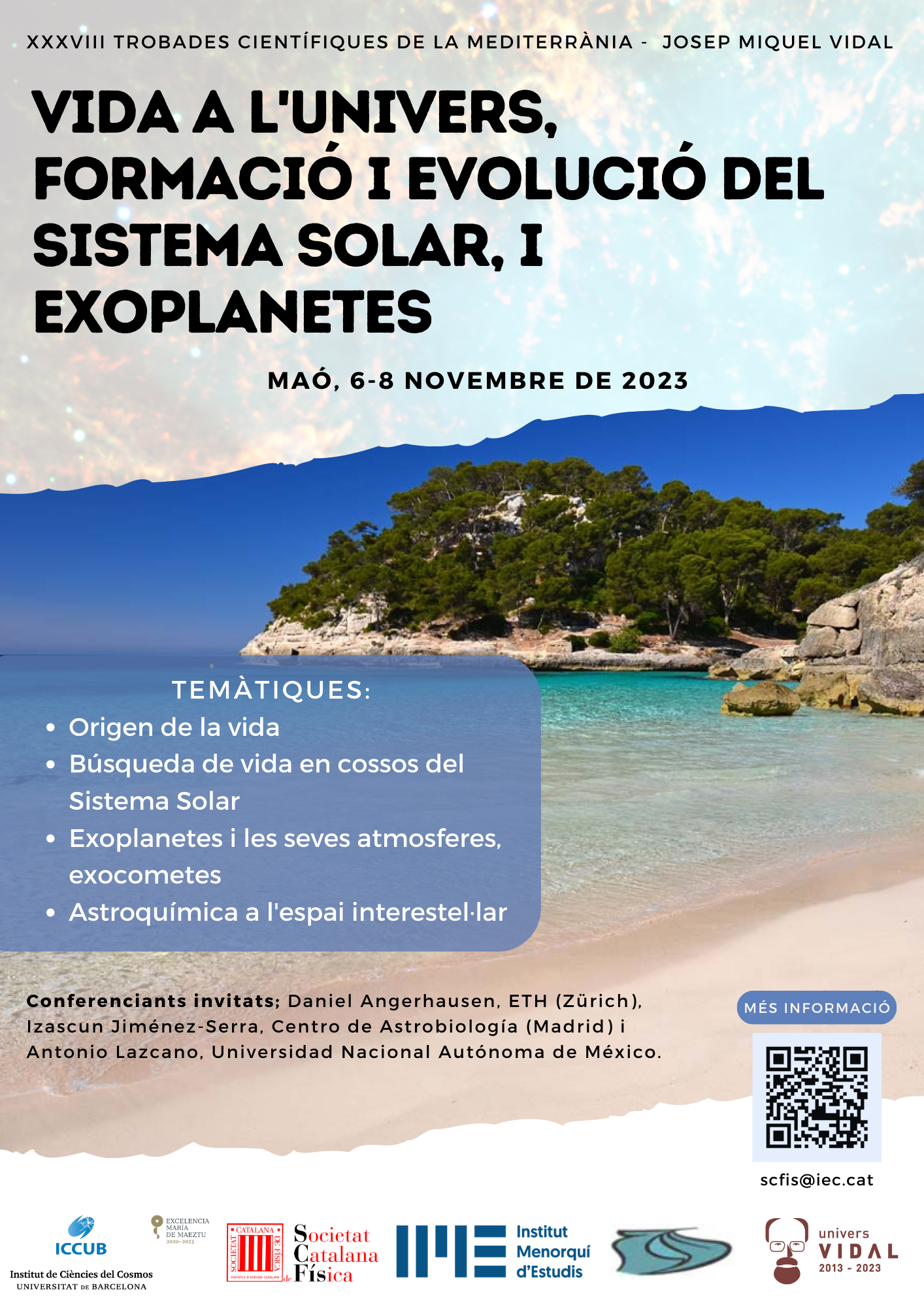XXXVIII Trobades Científiques de la Mediterrània - Josep Miquel Vidal

Com va sorgir i evolucionar la vida, des de la creació d'elements pesants en supernoves com la que va originar la nebulosa del Cranc, fins a la vida que trobem avui en un lloc com una platja de Menorca?
La celebració de les XXXVIII Trobades de la Mediterrània: Vida a l'Univers, formació i evolució del Sistema Solar, i exoplanetes tindrà lloc a l'Insititut Menorquí d'Estudis a Maó els dies 6, 7 i 8 de novembre de 2023.
Gairebé 30 anys després del descobriment del primer exoplaneta, hem detectat més de 5000 exoplanetes i hem caracteritzat la seva distribució en massa, radi, període orbital i excentricitat en un ampli rang d'aquests paràmetres. La composició atmosfèrica dels exoplanetes detectats en trànsits sobre la seva estrella s'estan analitzant cada cop amb més detall, gràcies entre altres a les noves observacions espectroscòpiques amb el nou telescopi espacial JWST.
Al mateix temps, la vida en el Sistema Solar pot cercar-se en diversos cossos que contenen aigua líquida en el seu interior, en concret a Mart i alguns satèl·lits de Júpiter i Saturn, així com en petits asteroides o satèl·lits sòlids que puguin contenir evidència fòssil sobre els inicis de la vida en els seus gels interns. Així doncs, aspectes clau sobre l'origen i prevalença de la vida a l'Univers podrien descobrir-se en un futur no gaire llunyà.
L'objectiu d'aquesta trobada és reunir investigadors actius en un ampli ventall d'àrees científiques relacionades amb la recerca de vida al Sistema Solar i més enllà; l'origen del Sistema Solar i l'estudi dels meteorits, cometes i exocometes; i la caracterització d'exoplanetes on diversos organismes vius podrien aparèixer en una varietat d'entorns i condicions ambientals a l'Univers.
.png)

